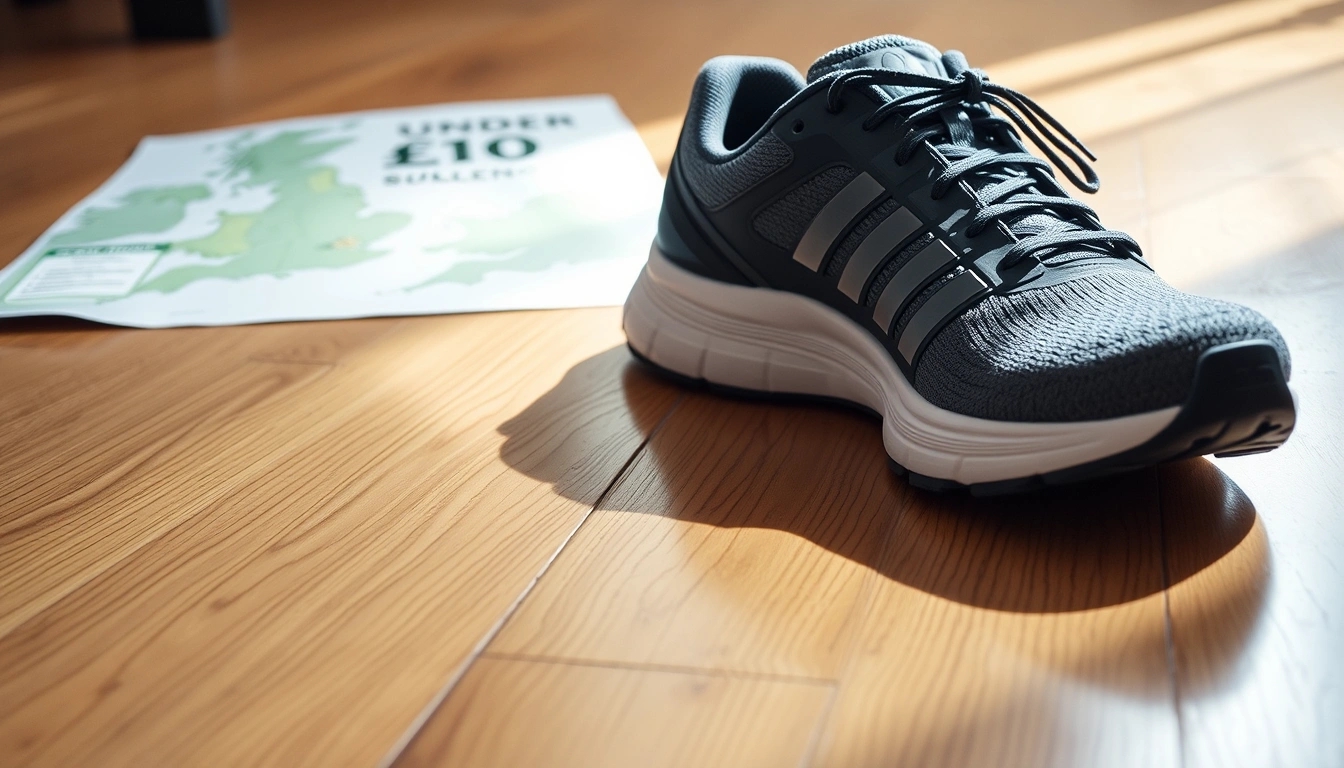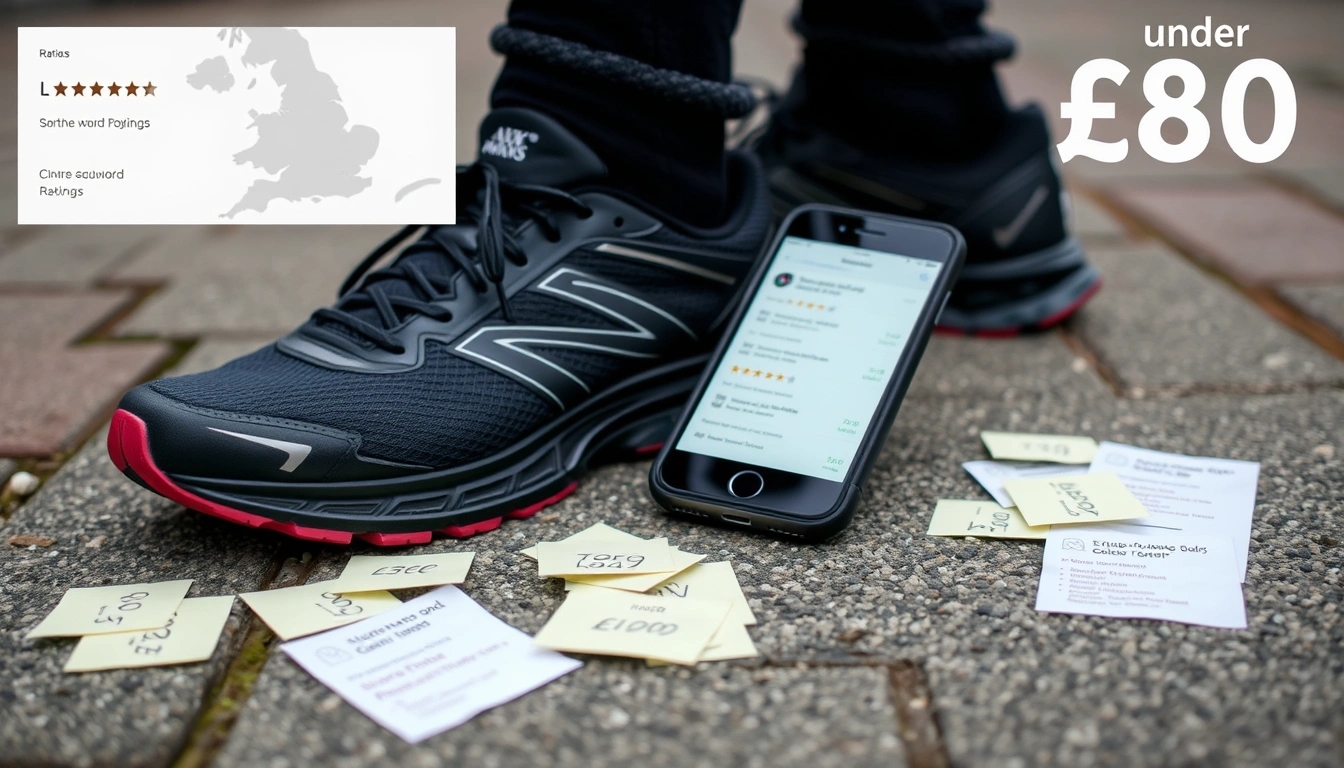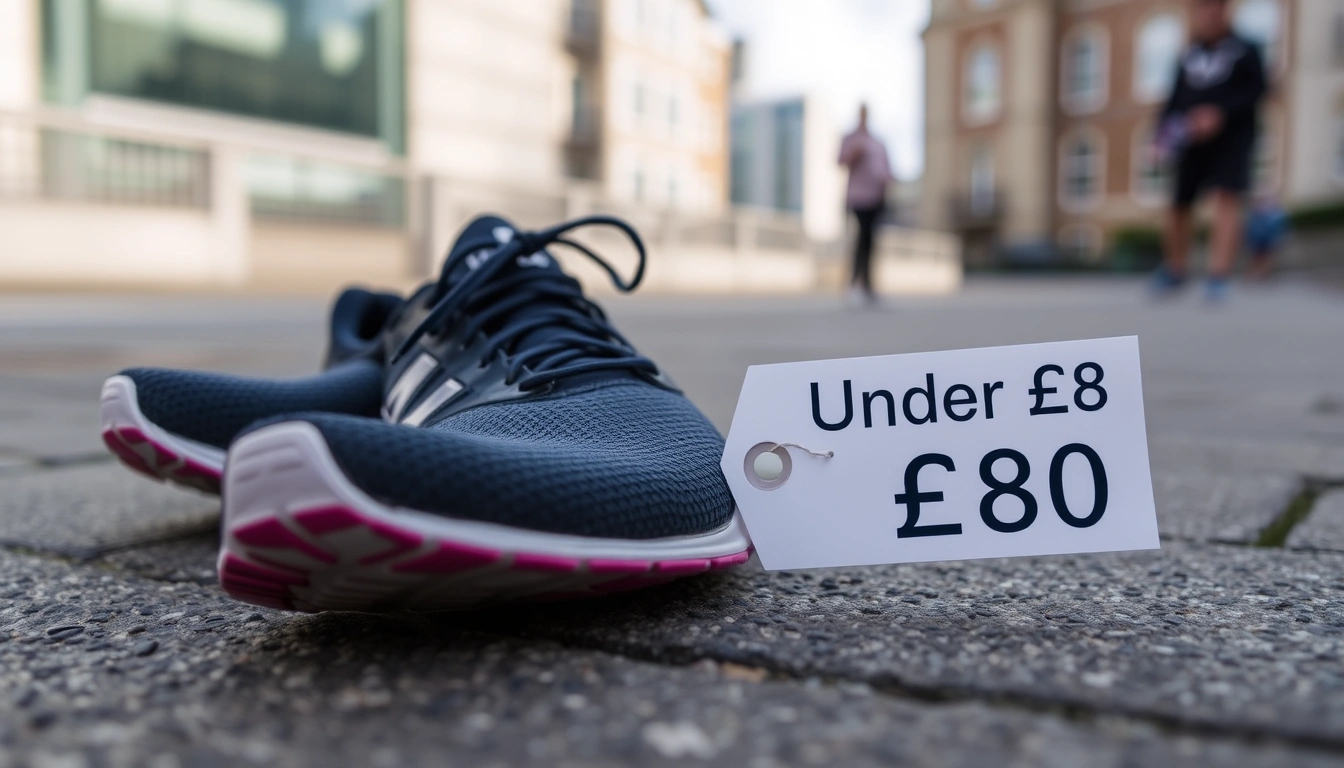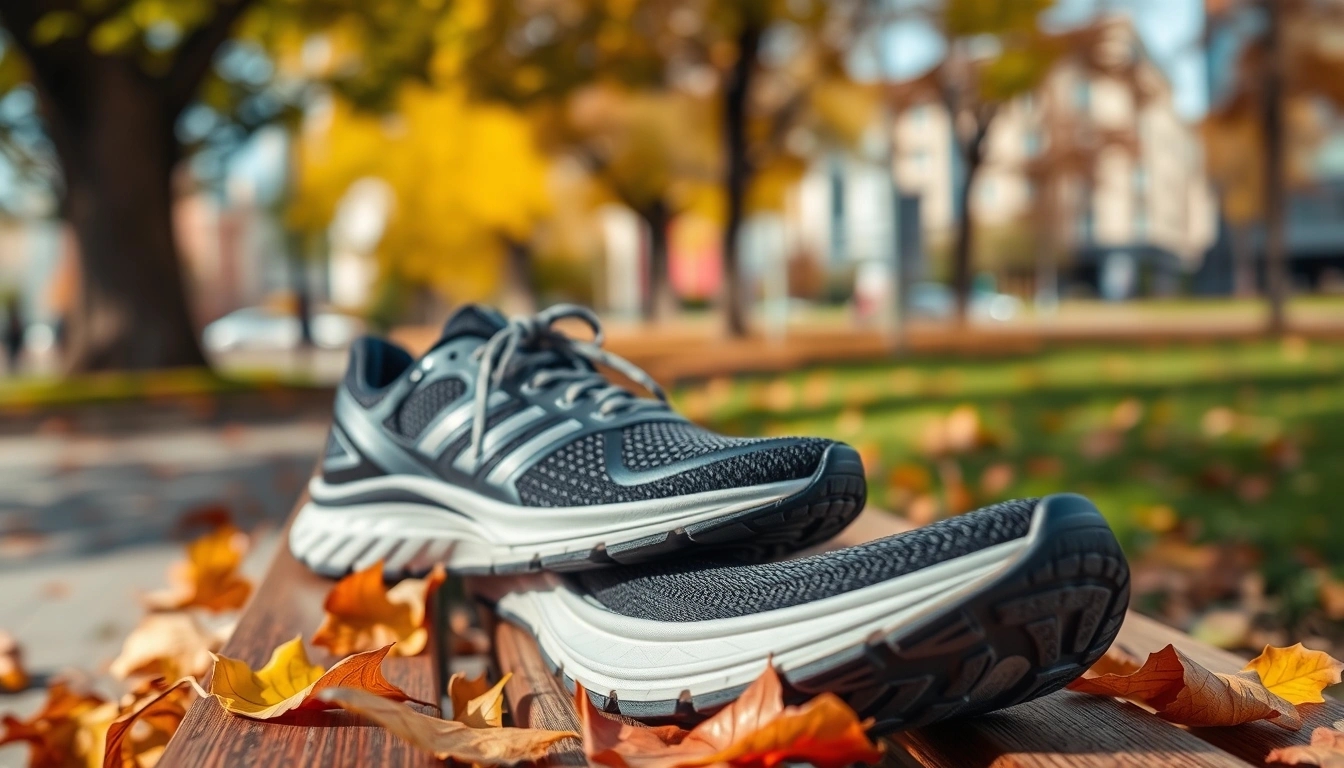So, you’re on the hunt for running shoes that won’t burn a hole in your wallet but still won’t have you limping after a 5k? Welcome to the club. Finding affordable running shoes that balance performance, comfort, and style is like trying to find a unicorn in a sea of trainers. But trust me, they’re out there, especially for UK runners who don’t want to splash out a fortune. Let’s dive into what makes a budget shoe worth your hard-earned cash without skimping on the essentials.
First off, don’t fall for the trap that cheap means rubbish. It’s tempting to think you get what you pay for, and sometimes, yeah, you do. But in the £80 or under bracket, there are some real gems hiding. The trick is knowing what to look for. Cushioning, for example, is often where budget shoes cut corners, but some brands manage to sneak in decent foam tech that actually supports your feet well enough for daily runs. And style? You’d be surprised how many budget trainers look sharp enough to wear casually without feeling like you’re sporting hand-me-downs.
- Performance: Look for shoes with solid grip and responsive midsoles. You don’t want to feel like you’re running on bricks.
- Comfort: Breathable uppers and enough padding around the heel can make or break your run.
- Durability: Cheaper shoes might not last as long, but picking ones with reinforced soles can buy you a few more miles.
Now, if you’re new to running or just don’t want to spend a fortune, brands like ASICS, New Balance, and even some Nike outlet finds often dip under the £80 mark during sales. These brands know how to make shoes that don’t feel like punishment. But here’s the catch: you might need to hunt around online or wait for seasonal sales to snag the best deals.
| Brand | Model | Key Feature | Price Range | Pros | Cons |
|---|---|---|---|---|---|
| ASICS | Jolt 3 | Gel cushioning | £50-£75 | Good support, lightweight | Basic design, limited color options |
| New Balance | FuelCore NERGIZE | Responsive midsole | £60-£80 | Stylish, comfortable fit | Less durable outsole |
| Adidas | Duramo SL | Breathable mesh upper | £55-£80 | Good ventilation, versatile | Moderate cushioning |
Keep in mind, the UK market is flooded with options, but don’t just grab the first cheap trainer you see. Read customer reviews like your life depends on it — because, well, your feet do. Some shoes might feel amazing on paper but turn out to be a nightmare after a few runs.
Also, if you have specific foot needs like flat feet or high arches, don’t ignore that just to save a tenner. Some budget shoes do cater to these requirements, but you’ll want to check the specs carefully or consult with a specialist. Otherwise, you might end up with blisters or worse.
In conclusion, yes, you can find running shoes under £80 in the UK that won’t make you want to toss them after a week. It takes a bit of patience, a dash of research, and maybe a sprinkle of luck during sales. But when you find that pair? Oh boy, it’s like striking gold — comfy, reliable, and looking good while you pound the pavement.
Why price matters but isn’t everything
Alright, let’s cut to the chase: when you’re on the hunt for running shoes under £80 in the UK, your wallet definitely has a say. But here’s the kicker — price isn’t the be-all and end-all. Sure, £80 isn’t exactly chump change, but it’s also not top-tier running shoe territory. So, how do you make sense of it all without ending up with a pair that feels like you’re running on cardboard or breaks down after a month? It’s a bit of a balancing act, really.
First off, cost sets the stage. It dictates what materials and technology the shoe can realistically have. You’re probably not going to get the latest foam tech or carbon plates in this price range, no matter how much you wish. But that doesn’t mean you’re doomed to suffer. Many brands have nailed the art of delivering solid performance and comfort without charging an arm and a leg. The trick is knowing what to look for and where to compromise.
- Materials: Expect synthetic uppers rather than premium mesh. Not always a bad thing — sometimes synthetics hold up better in wet UK weather.
- Cushioning: It’ll be basic but functional. Don’t expect plush, cloud-like softness, but a decent midsole can still protect your joints.
- Durability: Here’s where budget shoes often show their cracks — literally. You might get fewer miles out of them, so plan accordingly.
Now, don’t get me wrong — quality still matters, even on a budget. A cheap shoe that feels like a rock won’t get you far and might even cause injuries. And that’s why blindly chasing the lowest price can backfire spectacularly. Instead, look for shoes that offer a good blend of fit, support, and decent materials. Sometimes, spending a few extra pounds above £80 might be worth it if it means avoiding blisters or shin splints.
| Factor | What to Expect Under £80 | Possible Trade-offs |
|---|---|---|
| Materials | Durable synthetics, less breathable mesh | May feel less airy, slightly heavier |
| Cushioning | Basic EVA foam midsoles | Less shock absorption on long runs |
| Support | Standard arch support, minimal tech | Not tailored for specific foot issues |
| Durability | Good for casual runners | Wears out faster with heavy use |
Also, don’t underestimate the power of fit and comfort. Sometimes, a cheaper shoe that fits you like a glove beats a pricier one that’s just “meh.” So, try before you buy if you can, or at least check return policies when shopping online. And hey, if you spot a sale or discount, jump on it — that’s where you can snag better quality for less.
In the end, the secret sauce is knowing what matters most for your running style and needs. Price sets the boundaries, but within those lines, quality and comfort make the game worth playing. So, don’t just chase the cheapest pair — hunt for the best bang for your buck, because your feet deserve it.
Top brands offering budget-friendly options
When it comes to snagging a pair of decent running shoes without emptying your wallet, the UK market has some solid contenders. You’d be surprised how many brands manage to keep their kicks both affordable and functional. Let’s be honest, not everyone wants to splash out £150+ on shoes they might only use a couple of times a week. So, here’s a quick rundown of brands that get it right — delivering performance and style without the premium price tag.
- ASICS – Often the go-to for runners who want reliable cushioning and support, ASICS offers several models under £80, especially if you catch a sale. Their Gel series, for example, sometimes dips into this range, providing decent shock absorption and a snug fit. They’re not flashy, but they get the job done.
- New Balance – Known for comfort and durability, New Balance often surprises with budget-friendly options that don’t skimp on quality. The 500 and 600 series occasionally fall under the £80 mark, offering solid arch support and a breathable mesh upper.
- Adidas – While many Adidas running shoes lean expensive, the brand does have some budget-friendly picks like the Duramo or Galaxy models. These shoes pack enough punch for casual runners, with decent grip and lightweight construction.
- Puma – Puma’s running shoes are stylish and affordable, often under £80, making them a hit for those who want to look good while pounding the pavement. Cushioning is decent, though maybe not for serious marathon training.
- Kalenji (Decathlon) – This brand is a hidden gem for budget runners. Kalenji shoes are designed with input from athletes but come at a fraction of the price of big-name brands. If you’re new to running or just need a pair for light jogs, these are worth checking out.
Now, before you rush off to buy the cheapest pair you find, remember: price isn’t everything. Some brands offer killer deals during sales, so keep your eyes peeled. Also, a lower price sometimes means compromises in durability or cushioning tech. But hey, if you’re not logging 50 miles a week, these shoes can be perfectly adequate.
| Brand | Typical Price Range (£) | Key Features | Best For |
|---|---|---|---|
| ASICS | £50 – £80 | Gel cushioning, snug fit, breathable | Casual runners, moderate mileage |
| New Balance | £45 – £80 | Arch support, durable outsole, mesh uppers | Comfort seekers, beginners |
| Adidas | £55 – £80 | Lightweight, good grip, stylish | Casual joggers, style-conscious |
| Puma | £40 – £75 | Good cushioning, trendy design | Light runners, fashion-focused |
| Kalenji | £30 – £70 | Affordable, decent tech, lightweight | Beginners, budget-conscious |
So, if you’re hunting for a solid pair of running shoes under £80, these brands are your best bets. Just be ready to do a bit of digging for sales or outlet deals. And don’t be shy to try them on in-store if you can — fit is king, no matter how cheap the shoe.
In the end, it’s about finding that sweet spot between cost, comfort, and durability. You don’t have to break the bank to run happy, but a little patience and research go a long way. Happy running!

Key features to look for in budget running shoes
When it comes to snagging a pair of running shoes under £80, it’s easy to get overwhelmed by the sheer number of options out there. But don’t just grab the flashiest pair or the one with the coolest colours (although, hey, style does count). There are some critical design and technology elements that truly make a running shoe worth your hard-earned cash—even if that cash is limited. So, let’s break it down, no fluff, just the essentials.
- Midsole Cushioning: This is the heart of any running shoe. Under £80, you won’t find the ultra-luxury foams like Boost or ZoomX, but look for EVA foam or similar materials that offer decent shock absorption. It’s not about plush luxury but about protecting your joints from the pounding pavement.
- Arch Support: Whether you’re flat-footed, high-arched, or somewhere in between, good arch support is a must. Budget shoes often skimp here, so check if the shoe has a structured midfoot or some form of stability feature. It doesn’t have to be fancy, but a little support goes a long way.
- Outsole Durability: Cheaper shoes sometimes use thinner rubber or less durable materials on the outsole. This means they wear out faster, but a well-designed tread pattern can still provide good traction and grip, especially on roads or treadmills.
Now, don’t expect magic. Budget running shoes won’t have carbon plates or fancy knit uppers, but many offer surprisingly solid performance. One thing to keep an eye on is the upper material. Mesh uppers are common and great for breathability, but some cheaper models use synthetic materials that might trap heat or cause irritation after a few miles. So, if you’re sweating buckets, that’s a red flag.
| Feature | What to Expect | Why It Matters |
|---|---|---|
| Midsole Cushioning | EVA foam or similar | Protects joints, absorbs impact |
| Arch Support | Basic structured support | Prevents overpronation, improves comfort |
| Outsole | Rubber with tread pattern | Traction and durability |
| Upper Material | Mesh or synthetic | Breathability and fit |
Also, pay attention to the shoe weight. Heavier shoes might feel clunky and slow you down, especially if you’re a beginner trying to find your rhythm. Lightweight materials are sometimes sacrificed in budget shoes, but many brands manage a decent balance. Don’t be shy to try a few pairs on and jog around the shop or, if online, check return policies carefully.
In summary: a budget running shoe under £80 should have decent cushioning, adequate arch support, a durable outsole, and breathable uppers. You won’t get the bells and whistles of premium models, but with a bit of patience and savvy shopping, you can find shoes that keep you comfortable and safe on the road or track. Remember, it’s not about having the flashiest tech but about finding what fits your feet and running style best without breaking the bank.
Cushioning and support: What to expect
Alright, let’s get real about cushioning and support when you’re hunting for running shoes under £80. Spoiler alert: you’re not getting the Rolls-Royce of foot comfort, but that doesn’t mean your feet are doomed to suffer either. Budget running shoes have come a long way, but there’s definitely a catch — you need to keep your expectations grounded.
First off, cushioning in affordable shoes tends to be simpler. You won’t find those fancy, high-tech foams or energy-return midsoles like in premium models. Instead, expect EVA foam or basic rubber soles that do the job but won’t feel like running on clouds. This means impact absorption is decent but not mind-blowing. For casual runners or those pounding the pavement a few times a week, this is usually fine. But if you’re training for a marathon or logging serious miles, your legs might start sending you some “hey, can we get better shoes?” signals sooner than later.
- Basic cushioning: EVA foam midsoles are standard here — lightweight, affordable, and reliable.
- Shock absorption: Present but minimal compared to pricier shoes; expect a firmer ride.
- Heel-to-toe drop: Usually moderate, helping with a smooth stride but nothing revolutionary.
Support is another story. Budget shoes often offer adequate arch support for neutral runners but might fall short if you have flat feet or high arches. Don’t expect custom orthotic-level support or advanced stability features. Instead, you’ll get basic structural elements like a firm heel counter and some midfoot reinforcement. If you’re prone to overpronation or supination, you might want to try these shoes on in person or consider adding aftermarket insoles.
| Feature | Budget Running Shoes (Under £80) | Premium Running Shoes |
|---|---|---|
| Cushioning Material | EVA foam or basic rubber | Advanced foams like Boost, React, or ZoomX |
| Shock Absorption | Moderate, firmer ride | High, plush impact protection |
| Arch Support | Basic, neutral-friendly | Customizable, targeted support |
| Durability | Good for casual use | Designed for heavy mileage |
So what should you realistically expect? If you’re a beginner or a casual jogger, budget shoes can provide sufficient cushioning and support to keep you comfortable during your runs. However, if you’re a seasoned runner or have specific foot needs, these shoes might feel a bit lacking after a while. It’s a classic case of “you get what you pay for,” but that doesn’t mean you’re stuck with blisters and sore knees.
Finally, don’t underestimate the power of a good fit. Sometimes a snug, well-fitting shoe with basic cushioning beats a fancy shoe that doesn’t hug your foot right. If you’re on a tight budget, focus on fit first, then cushioning and support. And hey, if you find a budget shoe that ticks most boxes, consider yourself lucky — because finding a gem under £80 is like spotting a unicorn in the running world.
- Pro tip: Try shoes on later in the day when your feet are swollen to get the most accurate fit.
- Don’t forget: Adding quality insoles can upgrade cushioning and support without breaking the bank.
In the end, budget running shoes offer a practical balance — not luxury, but definitely functional. Just keep your runs sensible, listen to your body, and remember: cushioning and support are important, but they’re only one part of the whole running experience.
Durability concerns with cheaper shoes
When it comes to snagging running shoes under £80, the wallet might be happy, but your feet—and more importantly, your shoes—could be in for a rough ride. Let’s be honest: durability is often the first casualty when price tags drop. You might be tempted to think, “Hey, they look fine, they fit well, so why not?” Well, here’s the kicker—those budget kicks might not last as long as you hope.
So, what exactly are you trading off? For starters, the materials used in cheaper running shoes often don’t have the same resilience. The midsoles, which cushion your every step, tend to compress faster, losing their bounce and shock absorption after just a few hundred miles. And the outsole—the part that actually touches the ground? It’s usually made from thinner rubber or cheaper compounds that wear down quicker, especially if you pound the pavement regularly.
- Midsole breakdown: Expect quicker compression and reduced support over time.
- Outsole wear: Thinner rubber means faster tread loss and less grip.
- Upper material: Lightweight fabrics can tear or stretch out sooner.
Now, this doesn’t mean every shoe under £80 is a disaster waiting to happen. Some brands manage to squeeze decent durability into their budget lines. But, be prepared for a shorter lifespan—think 300 to 400 miles max, compared to 500+ miles on pricier models. For casual runners or those just starting out, this might be fine. But if you’re clocking serious mileage, cheaper shoes might leave you limping sooner than expected.
| Durability Aspect | Budget Shoes (<£80) | Mid-Range Shoes (£80-£130) | High-End Shoes (>£130) |
|---|---|---|---|
| Midsole Cushioning Longevity | 3-4 months of regular use | 6-8 months | 8-12 months+ |
| Outsole Wear | Wears down quickly, less grip | Moderate wear, decent grip | Durable rubber, excellent grip |
| Upper Material Durability | Prone to tearing/stretching | Better fabrics, reinforced areas | Premium mesh/materials, reinforced |
And here’s a little nugget of wisdom: durability isn’t just about how long the shoe lasts, but also how it performs over time. A shoe that loses cushioning too fast can lead to discomfort or even injury. So, if you’re on a tight budget but serious about running, consider rotating two pairs of budget shoes or hunting for sales on mid-range options.
- Pro tip: Check customer reviews specifically mentioning wear and tear before buying.
- Another tip: Inspect shoes regularly—if the sole is visibly worn or cushioning feels flat, it’s time to retire them.
In the end, cheaper running shoes are a bit like fast food—convenient and affordable, but not necessarily built for the long haul. If you’re just hitting the pavement occasionally or experimenting with running, they’ll do the job. But if you want to avoid the heartbreak of worn-out shoes halfway through your training, you might want to save up a bit or look for deals on more durable pairs. After all, your feet deserve more than just a quick fix.

Best running shoes under £80 for beginners
Starting your running journey can be a bit like diving into the deep end without floaties — exciting but also a tad intimidating. If you’re new to pounding the pavement, the last thing you want is to blow a fortune on fancy kicks that might not even suit your style or stride. Luckily, there are plenty of running shoes under £80 that offer the perfect mix of comfort, reliability, and yes, a dash of style, without making your wallet cry. Let’s break down what you really need as a beginner and how to spot those hidden gems in the budget section.
- Comfort is king: Your feet are going to thank you if your shoes feel like walking on clouds rather than bricks. Look for shoes with decent cushioning — not too soft that you feel like you’re sinking, but enough to absorb the shock of each step.
- Support matters: Beginners often underestimate how important good arch and heel support is. It helps prevent injuries and keeps you running longer without nagging aches.
- Durability within reason: Budget shoes won’t last forever, but a solid pair under £80 should get you through months of regular runs without falling apart.
Now, here’s the kicker: you can’t just grab any cheap pair and call it a day. Some brands have mastered the art of balancing cost and quality, delivering shoes that feel like a steal. Brands like ASICS, New Balance, and Adidas often have models that dip below that £80 mark during sales or in their entry-level ranges.
| Brand | Model | Key Feature | Price Range |
|---|---|---|---|
| ASICS | Gel-Contend 7 | Gel cushioning for shock absorption | £70-£80 |
| New Balance | Fresh Foam Arishi | Fresh Foam midsole for comfort | £65-£80 |
| Adidas | Duramo SL | Lightweight and breathable mesh | £50-£75 |
Before you rush off to buy, here’s a quick reality check: these shoes won’t have all the bells and whistles of pricier models. Don’t expect ultra-lightweight materials or cutting-edge tech, but they’ll do the job nicely for those first few months or even longer if you’re gentle on them.
One practical tip? Try them on in the afternoon or evening when your feet are slightly swollen — this is when your shoes need to fit best. Also, don’t forget to wear the socks you plan to run in; it makes a surprising difference.
- Test the fit: There should be a thumb’s width between your longest toe and the shoe’s end.
- Heel snugness: Your heel shouldn’t slip out when you walk or run.
- Flexibility: The shoe should bend easily where your foot naturally bends.
And hey, if you’re still on the fence, remember: running shoes are an investment in your health and happiness. Skimping too much might save cash upfront but could cost you in discomfort or injuries later. That said, with a bit of savvy shopping and patience, you can find a pair that fits your beginner needs without burning a hole in your pocket.
So, lace-up, hit the road, and remember — every runner started somewhere, usually in shoes that didn’t cost a fortune.
Running shoes for different foot types on a budget
Navigating the world of running shoes can feel like decoding some ancient script, especially when you’re on a budget and your feet don’t exactly fit the “one-size-fits-all” mold. Flat feet, high arches, neutral runners—each foot type comes with its quirks and demands, and finding affordable shoes that actually work? That’s the real challenge. But don’t sweat it; you can snag decent kicks under £80 without turning your feet into a torture chamber.
First off, let’s talk flat feet. These guys tend to overpronate, meaning their feet roll inward too much when running. You want shoes with solid arch support and stability features to keep everything aligned. Now, here’s the kicker: most budget shoes won’t have fancy tech, but look for terms like “motion control” or “stability” in the description. Brands like ASICS or New Balance often sneak these features into their cheaper lines. Don’t expect orthotic-level support, but a firm midsole and a snug fit can work wonders.
- Tip: Try shoes with a wider base and reinforced heel counters.
- Watch out: Avoid shoes that feel too soft or squishy in the arch area.
Moving on to high arches, which are the total opposite problem. These folks underpronate, so their feet don’t absorb shock well, leading to more pressure on heels and balls of feet. Cushiony shoes are the name of the game here, but finding them on a budget? Tricky but doable. Look for shoes boasting “extra cushioning” or “gel pads” in the heel and forefoot. Think about brands like Skechers or Saucony’s entry-level models—they often pack decent padding without the premium price.
| Foot Type | Key Shoe Features | Budget Brand Examples |
|---|---|---|
| Flat Feet | Stability, motion control, firm midsole, arch support | ASICS GEL-Contend, New Balance 520 |
| High Arches | Extra cushioning, shock absorption, gel pads | Saucony Cohesion, Skechers GoRun |
| Neutral Runners | Balanced cushioning, flexibility, lightweight | Adidas Duramo, Nike Revolution |
And then, the neutral runners. Lucky them, right? Their feet don’t over or underpronate too much, so they’re basically the Goldilocks of running shoes. For neutral runners, the trick is to find shoes with balanced cushioning and flexibility. This is where you can be a bit more adventurous with budget picks because you’re not relying on specific corrective features. Just avoid shoes that feel too clunky or overly stiff.
Now, a quick heads-up: even the best budget shoes won’t last forever, especially if you’re pounding the pavement regularly. Keep an eye on wear patterns and be ready to replace them sooner than you might like. And please, if you’re really struggling with foot pain or injuries, don’t just settle for cheap shoes—maybe invest a bit more or get a professional gait analysis.
- Pro tip: Try shoes on later in the day when your feet are swollen to get the best fit.
- Don’t forget: Socks matter! A good pair can improve comfort and reduce blisters.
So yeah, picking running shoes on a budget for your specific foot type isn’t rocket science, but it does take some patience and a bit of homework. Keep your eyes peeled for sales, check user reviews, and don’t be shy to try a few pairs before committing. Your feet will thank you—and your wallet won’t feel completely betrayed.
Where to buy: Online vs physical stores
When it comes to snagging budget running shoes under £80 in the UK, the age-old debate pops up again: should you buy online or hit up a physical store? Both options have their perks and pitfalls, and honestly, it boils down to what you value most—convenience, fit, or maybe just a good bargain hunt.
- Shopping Online: The internet is a treasure trove for budget runners. You get access to countless brands and models without leaving your couch. Plus, with all those sales, discount codes, and flash deals, your wallet might just thank you. But beware, the fit gamble is real. You can’t exactly try before you buy, and returns can be a headache if the shoes don’t fit right or feel off.
- In-Store Shopping: Walking into a store means you get to try on shoes, feel the cushioning, and maybe even jog a few steps down the aisle (if the staff don’t look too weirded out). It’s perfect if you’re picky about fit or have specific foot needs. On the flip side, stores might have limited stock or fewer budget options, and prices can be a tad higher than online.
Let’s break it down with a quick comparison table to clear the fog:
| Aspect | Online Shopping | Physical Stores |
|---|---|---|
| Variety | Huge selection, multiple brands & models | Limited to store stock and brands |
| Price | Often cheaper with deals & discounts | Usually higher, fewer sales |
| Fit & Comfort | Guesswork, relies on reviews & size charts | Try before you buy, immediate feel test |
| Convenience | Shop anytime, delivered to your door | Need to travel, store hours apply |
| Returns & Exchanges | Can be slow, sometimes costly | Instant exchanges or refunds |
Now, if you’re a newbie runner or someone who’s had their fair share of shoe disasters, the in-store route might save you from buying a pair that feels like walking on bricks. But if you’re a seasoned bargain hunter and know your size like the back of your hand, online shopping can be a goldmine. Just keep an eye on those return policies because not all sellers are created equal.
Also, don’t underestimate local running stores. They often offer expert advice tailored to your running style and foot type, which is gold when you’re on a budget but don’t want to compromise on comfort or injury prevention.
In the end, whether you click “buy now” online or lace up in a store fitting room, the goal is the same: find a pair of shoes that won’t make your feet scream after a few miles, all while keeping your budget intact. So, weigh your options, maybe mix and match (try in-store, buy online?), and happy running!

Customer reviews and real-world performance
When you’re on the lookout for affordable running shoes under £80, skimming through customer reviews isn’t just a nice-to-have—it’s downright essential. Sure, the specs on a box or website might look promising, but real runners sharing their experiences? That’s where the rubber meets the road. You’d be surprised how much you can learn about a shoe’s comfort, durability, and fit from folks who’ve actually clocked miles in them.
- Unfiltered honesty: Unlike polished marketing copy, user reviews often reveal the nitty-gritty—like whether the cushioning feels like running on clouds or more like stepping on bricks after 10 miles.
- Fit quirks: Some shoes might run narrow or wide, and only real users will tell you if you need to size up or down.
- Durability insights: Budget shoes can be hit-or-miss on lasting through a few months of training. Reviews help spot patterns—if a model’s sole starts peeling after a month, you’ll know before you buy.
Why trust real-world feedback over brand hype?
Manufacturers are great at highlighting the positives, but they rarely mention the downsides. User reviews balance the scale by sharing both praise and gripes. Plus, they often include useful tips—like how to break in a shoe or warnings about certain terrains where the grip might fail. It’s like having a community of running buddies giving you the lowdown.
| Aspect | What Reviews Reveal | Why It Matters |
|---|---|---|
| Comfort | True feel after several runs, including arch support and breathability | Ensures shoes won’t cause blisters or pain mid-run |
| Longevity | How well the shoe holds up over weeks/months | Helps avoid wasting money on shoes that fall apart fast |
| Performance | Traction, flexibility, and responsiveness on different surfaces | Matches shoe capabilities to your running style and routes |
Now, here’s the kicker: not all reviews are created equal. Some are overly positive, possibly fake, while others might be just nitpicking. So, take everything with a pinch of salt. Look for detailed reviews, especially those that mention the reviewer’s running habits and foot type. If a shoe consistently gets thumbs down from runners with similar needs as you, that’s a red flag.
Pro tip: Check multiple platforms—Amazon, specialized running forums, even social media groups. Sometimes the best nuggets of info hide in unexpected corners.
At the end of the day, reading user feedback helps you dodge buyer’s remorse and find running shoes that punch above their price tag. Because, let’s face it, no one wants to waste £80 on shoes that feel like a medieval torture device after a few runs. So, dive into those reviews, weigh the pros and cons, and lace up with confidence.
Seasonal sales and discounts: Timing your purchase
Alright, let’s talk about snagging those best deals on running shoes under £80 in the UK — because who doesn’t love a bargain, right? If you’re like me, you’ve probably stared at a pair of sleek trainers online, debating if you should just bite the bullet or wait for the price to drop. Spoiler alert: waiting usually pays off. But when exactly should you hit that “buy” button? Here’s the lowdown.
- End of season sales – This is the golden window. Think January and July, when brands are clearing out last season’s stock to make room for new collections. You can find some real gems here, often with discounts pushing prices well below £80. Just beware, the very best sizes and colours might vanish faster than your willpower at a cake shop.
- Black Friday and Cyber Monday – The hype is real. Every year, late November brings a flood of deals, and running shoes are no exception. Brands slash prices, and retailers compete fiercely, so it’s a prime time to score quality kicks without emptying your wallet.
- Back-to-school season – Oddly enough, late August to early September can be a sweet spot. Retailers target students and parents gearing up for the new term, so you might stumble upon discounts on running shoes that fit your budget.
Now, before you get too excited, a quick heads-up: not all sales are created equal. Some discounts are just marketing fluff — a tiny percentage off that barely makes a dent. So, it’s worth doing a bit of homework. Compare prices across multiple sites, check historical pricing tools if you’re a nerd like that, and read customer reviews to avoid ending up with a dud.
| Season | Typical Discount Range | Pros | Cons |
|---|---|---|---|
| End of Season (Jan/Jul) | 30%-50% | Big discounts, good stock variety | Limited sizes/colors, older models |
| Black Friday/Cyber Monday | 20%-60% | Massive deals, wide selection | High competition, stock runs out fast |
| Back-to-School (Aug/Sep) | 15%-35% | Decent discounts, new models sometimes included | Less variety, mostly kids’ sizes |
Oh, and don’t forget about flash sales and clearance events that pop up randomly throughout the year. Sign up for newsletters from your favourite sports stores or brands, and keep an eye on apps and social media. Sometimes, deals appear out of nowhere, and if you blink, you miss ‘em.
Finally, a little tip from someone who’s been burnt before: patience is a virtue, but don’t wait forever. Sometimes, the “perfect” deal never shows up, and you end up running in your old trainers longer than you should. If you find a pair that ticks most boxes and feels good, go for it — better to start running comfortably now than wait for a mythical sale.
In summary, timing your purchase around these key periods can save you a decent chunk of change on running shoes under £80. But keep your wits about you, shop smart, and remember that sometimes, the best deal is the one that gets you out the door and moving.
Comparing popular models: A quick table
Alright, so you’re hunting for the best bang for your buck when it comes to running shoes under £80 in the UK, right? It’s a jungle out there with tons of options promising the moon but delivering… well, sometimes just the pavement. To make your life a bit easier, here’s a handy comparison chart that breaks down some of the top affordable running shoes, looking at their key features, pluses, and quirks. Because let’s face it, no shoe is perfect, especially not in this price range.
| Model | Key Features | Pros | Cons | Best For |
|---|---|---|---|---|
| ASICS Gel-Excite 8 | Gel cushioning, breathable mesh, durable outsole | Great shock absorption, comfortable fit, reliable grip | Not the lightest shoe, slightly narrow toe box | Beginners & daily joggers |
| New Balance 411v2 | Lightweight EVA midsole, breathable upper, rubber outsole | Affordable, decent arch support, versatile for gym & road | Less cushioning for long runs, durability issues reported | Casual runners & gym users |
| Adidas Duramo SL | Lightweight mesh, Cloudfoam midsole, flexible design | Good comfort for price, stylish look, flexible sole | Minimal heel support, not ideal for uneven terrain | Short runs & urban runners |
| Puma Flyer Runner | Soft EVA cushioning, breathable upper, durable rubber outsole | Breathable, lightweight, decent durability | Arch support could be better, narrow fit | Light training & casual running |
| Skechers Go Run Fast | Responsive midsole, mesh upper, slip-on style | Super comfy, easy on/off, good flexibility | Less sturdy for heavy runners, minimal heel lock | Runners prioritizing comfort & speed |
Now, before you start drooling over the specs, here’s a quick reality check: under £80 means some compromises. Don’t expect ultra-premium cushioning or the latest tech that costs triple digits. But these shoes? They punch well above their weight if you’re a casual runner or someone just starting out.
- ASICS Gel-Excite 8 is your trusty workhorse if you want solid shock absorption without feeling like you’re wearing bricks.
- New Balance 411v2 is a neat all-rounder but don’t push it too hard on marathon training days.
- Adidas Duramo SL scores style points and comfort for city runs but gives you less protection on rough trails.
- Puma Flyer Runner feels light and breathable but might leave arch support fans wanting more.
- Skechers Go Run Fast is a comfy slip-on that’s great for quick runs or gym sessions but might not hold up for heavy pounding.
So, what’s the takeaway? If you’re on a budget, these shoes offer solid value without totally sacrificing comfort or style. Just remember to pick based on your running style, foot shape, and what kind of runs you do most often. And hey, if you find a killer deal during seasonal sales, grab it before someone else does!
In the end, this chart isn’t gospel, but it’s a pretty decent starting point for navigating the maze of affordable running shoes in the UK. Lace up, hit the pavement, and see what works for you—sometimes the best shoe is the one that just feels right on your foot.

Final thoughts: Are cheap running shoes worth it?
So, here we are at the crossroads of budget and performance — the million-pound question: can cheap running shoes really cut the mustard? Let’s be honest, when your wallet’s feeling light but your feet still crave that smooth run, it’s tempting to snag the cheapest pair on offer. But does that bargain bin find truly deliver, or are you setting yourself up for a flop? Spoiler alert: it’s not black and white.
First off, running shoes under £80 absolutely exist and can surprise you. They often pack decent cushioning and support, especially if you’re a casual runner or just starting out. Many brands now realize you don’t have to charge an arm and a leg to make shoes that don’t feel like you’re jogging on bricks. But—and here’s the kicker—these shoes usually come with some trade-offs. Think less durable materials, less advanced tech, and sometimes a fit that’s a bit “meh.”
- Comfort: Surprisingly good for short to medium runs.
- Support: Basic but sufficient for neutral runners.
- Style: You can still look decent without flashing cash.
However, if you’re pounding the pavement daily or training for a marathon, those budget shoes might start showing their cracks—literally and figuratively. The cushioning may compress faster, and the outsole might wear thin quicker than you’d like. It’s like buying a cheap umbrella; it works fine until the first gust of wind.
| Aspect | Budget Shoes (<£80) | Mid-Range Shoes (£80-£150) | Premium Shoes (>£150) |
|---|---|---|---|
| Cushioning | Basic, adequate for beginners | Enhanced, better shock absorption | Advanced tech, maximum comfort |
| Durability | Moderate, may wear out faster | Good, balanced lifespan | High, built for heavy use |
| Support | Minimal to moderate | Targeted support for foot types | Customizable and advanced |
| Price | £40-£80 | £80-£150 | £150+ |
Let’s not forget the psychological bit—sometimes, feeling good in your shoes is half the battle. If a cheaper pair gets you out the door and moving, that’s a win. But if you’re constantly battling blisters or discomfort, the “save now, pay later” mantra kicks in hard.
In a nutshell, cheap running shoes can meet your needs, but with some caveats. They’re perfect for beginners, casual joggers, or those who just want to test the waters. Yet, if you’re serious about performance, injury prevention, or longevity, you might want to stash a bit more cash for something that lasts longer and feels better mile after mile.
Pro tip: Keep an eye out for sales, clearance deals, or last season’s models. You can often score mid-range shoes at budget prices if you play it smart.
So, are cheap running shoes worth it? The answer is a classic “it depends.” Know your running style, your frequency, and your feet. Don’t expect miracles, but don’t write them off either. Sometimes, a bargain is just what the doctor ordered.
Happy running, and may your shoes serve you well—no matter the price tag!
Frequently Asked Questions (The title must be written in English.)
- Are running shoes under £80 really good enough for serious runners?
Absolutely! While you might think cheaper means lower quality, many budget running shoes pack impressive performance and comfort. Of course, they might not have all the high-end tech of pricier models, but for everyday runs and beginners, they often deliver surprising value without breaking the bank.
- What features should I prioritize when shopping for affordable running shoes?
Look for solid cushioning and adequate support tailored to your foot type. It’s like picking the right gear for a road trip – comfort and durability matter most. Breathable materials, decent grip, and a snug fit are also key. Don’t get dazzled by flashy designs; focus on what keeps your feet happy mile after mile.
- How long can I expect budget running shoes to last?
Think of cheaper shoes as a sprint, not a marathon. They typically last between 300-500 miles, depending on usage and terrain. Durability might take a hit compared to premium options, so if you’re pounding pavements daily, consider rotating shoes or upgrading sooner to avoid injury.
- Can I find running shoes for specific foot types under £80?
Yes! Many brands offer budget-friendly options designed for flat feet, high arches, or neutral runners. It’s like tailoring a suit on a budget – you just need to know your measurements (foot type) and shop smart. Checking product descriptions and reviews helps pinpoint the best match.
- Is it better to buy running shoes online or in a physical UK store?
Both have perks. Online shopping offers convenience and often better deals, but you miss out on trying shoes on before buying. Physical stores let you test fit and feel the shoe, which can prevent costly returns. If you go online, make sure the retailer has a good return policy.
- When is the best time to buy running shoes under £80?
Seasonal sales like Black Friday, Boxing Day, or end-of-season clearances are golden opportunities. Think of it as catching a shooting star – timing your purchase right can snag you top-quality shoes at a fraction of the price. Keep an eye on deal sites and newsletters for alerts.
- Do customer reviews really matter for budget running shoes?
Definitely! Reviews are like a sneak peek into real-world performance. They reveal durability, comfort, and fit from people who’ve already tested the shoes. Reading both positive and negative feedback helps you avoid surprises and find shoes that truly suit your running style.
- Are cheap running shoes worth the investment?
In a nutshell, yes – if you’re clear about your needs and realistic about expectations. Budget shoes can be fantastic for beginners, casual runners, or those on tight budgets. They offer a great balance of comfort and performance without the flashy price tag, proving you don’t always have to pay more to run better.












